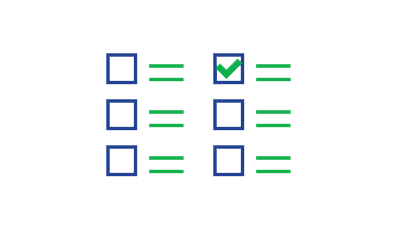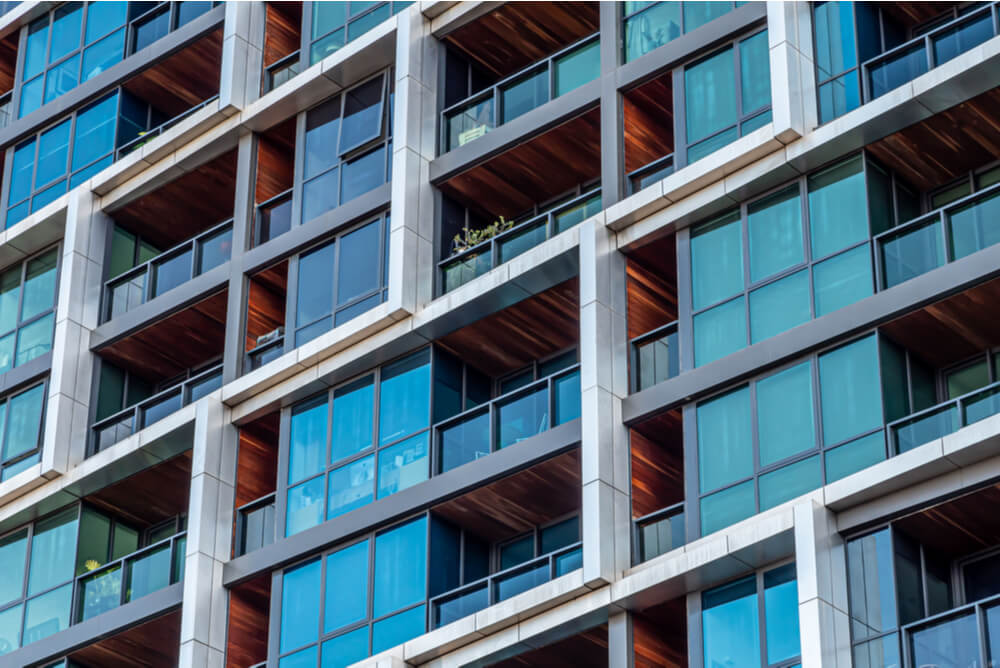Many people have varying insurance needs, from landlords and tenants to owner-occupiers. While some might require full home and contents cover, others may only need to cover their contents or get a home insurance policy for their investment property.
We’ve broken down each type of policy and what they can offer you in this guide to home and contents insurance.
Jump to the section most relevant to you below:
If you’re a tenant in a rental property, you won’t need to take out home insurance which is also known as building cover for the physical structure of the property; that’s your landlord’s or the building owner’s responsibility.
However, you are responsible for the safekeeping of your own possessions. Renters insurance (or just contents insurance) is a suitable policy for renters to protect their belongings from loss, damage or theft.
Read our guide for first-time renters for more information.
Contents insurance only covers your contents in the event they’re damaged by certain insured events (e.g. fire or theft). With insurance for renters, you can protect your furnishings, clothing, electronics and other items found in your home against loss, theft or damage.
Depending on your insurer and policy, you can also insure specific items that you regularly take out of the house (like your bicycle, phone or handbag) with personal effects cover.
Some events that your insurance for renters could cover for include:
Some of these coverages may be automatically included in your contents insurance, while others may be offered as optional extras you can include in your policy for an additional cost.
N.B.: Insurance for renters will usually provide cover up to certain limits, sub-limits, terms and conditions. Make sure you check the relevant Product Disclosure Statement (PDS) for a full list of inclusions and exclusions in your policy.
Depending on your renters insurance policy, you may have the option to add additional cover for things like:
If you’re moving to a new house, some contents policies may also include transit insurance. This provides limited cover against things like fires and car accidents when your contents are being taken by professional movers to another property.
Keep in mind that any optional extras you add to your policy will usually incur an additional cost.
Your contents insurance premiums depend on several things, including the value of the belongings you want to insure. Another factor that may affect the cost of your contents insurance is any item that’s particularly expensive to replace, which may need to be added separately to your policy for an additional cost. In addition to the value of your possessions, the excess can also affect how much a policy costs.

As a homeowner or owner-occupier, you’ll presumably want to safeguard your investment any way you can, as it’s one of your most valuable assets. The ideal insurance for homeowners to protect their bricks and mortar is home insurance.
If you took out a loan to buy or build your home, your lender may even require you to have an adequate home insurance policy to cover your property’s replacement costs. This is because your lender is also investing in your home.
A combined home and contents insurance policy can cover both. Should anything happen to your home or the contents inside it, you could be reimbursed up to the sum insured amount listed on your policy if you’re suitably insured.
Be sure to check the PDS to understand your policy benefits, limits, terms and conditions. You should also make sure that you’re adequately insured for certain events.
The cost of home and contents insurance will be unique to each person because it’s calculated based on several factors. For instance, your premiums can be affected by the level of cover you choose; a premium policy will cost more than a basic policy, as it will include more benefits and cover a broader range of events.
Other factors that may influence the cost of your insurance can include:
Also, any optional extras you add to your policy for an additional coverage will affect the cost of your insurance. Optional extras can include things like insurance for portable items, flood damage and accidental damage cover.
If you want to get an idea of how much home and contents insurance could cost you, you can complete a quote through our comparison service.
Becoming a landlord and investing in property can help you grow your investment portfolio and provide an extra source of income. As such, it’s important to know how to protect your property and understand the responsibilities that come with being a landlord.
Landlords insurance is a type of home insurance designed specifically for those who let out their property.
Depending on the insurer and policy, insurance for landlords may cover you for loss, theft or malicious damage to your rental property by your tenant. This type of policy may also cover you for repairing or rebuilding your investment property after a natural disaster, such as a storm, flood or fire. Insurance for landlords can also cover loss of rental income due to tenant default, although this may be offered as an optional extra.
As well as cover for the building, landlords insurance will usually cover fixed items like:
Landlords insurance can also cover your legal liability if a tenant is injured or their property damaged in your rental home. Remember to always read your PDS to know exactly what you’re covered for.
We always hope that tenants will do the right thing, but sometimes things can go wrong. Your investment home could be damaged, the lease broken or your tenant might not pay the rent. Don’t forget also that this is Australia, where natural disasters are all too common. Without landlords insurance, you could be thousands of dollars out-of-pocket if something like this happens to you.
Which is why finding the right policy is so important. Luckily, this is where we can help. No matter the type of home you’re renting out, we can help you compare great-value in just minutes with our landlords insurance comparison tool.
Both a landlords insurance policy and home insurance policy can include cover for the structure of your building and any other built structures on your property (such as external garages, sheds, fences and even pools) if they’re damaged or destroyed by a listed event on the policy like fires, theft, storms or other natural disasters.
The key difference between the two types of insurance is that landlords insurance can also cover renting-specific scenarios, like tenant default or loss of rental income.
Strata or body corporate fees are a levy that property owners usually pay to be part of a complex, apartment building or gated townhouse community. The strata fee is put towards paying for maintenance or repairs to common areas and shared utilities, building insurance and other building works.
If you own a block of units or strata-titled property, your insurance options are usually more complicated. Strata-titled properties will be provisioned with specific strata insurance, which every owner pays for via their strata fees. Renters don’t pay strata or body corporate fees on top of their rent, since their landlord or building’s owner will cover it.
Strata insurance covers the cost for repairs or replacement of both the external walls of a building and common property in a strata-titled complex. However, prices will vary between properties and types of insurance depending on how much the house or building would cost to repair or replace.
It’s common for strata insurance to cover fixtures and amenities like:
In some instances, strata insurance may also cover fixed (unmovable) parts of your building, like ducted air conditioning.
Generally, strata insurance (like home insurance) won’t cover you for the interior walls as well as fixings like blinds, curtains or carpets; these are usually covered by landlords insurance. A strata policy also won’t cover your personal belongings, which can be protected by contents insurance.
As such, owner-occupiers or renters will still need to take out a contents-only policy if they want to cover their possessions in a strata-titled property.
The amount you pay for your insurance will vary, as there are several factors that can affect your home and contents premium. One of the biggest of these is the value of the building and the contents you want to insure. Other factors may include (but aren’t limited to) the following:
Your excess is the amount you may be required to pay when you make a claim. Excesses vary across policies and insurers.
To explain how an excess works, let’s say a storm damaged your home and the repair costs are $5,000. If your policy has a $500 excess, your insurer may deduct this amount from the $5,000 leaving the remaining $4,500 as a payout to you or in repairs or replacement costs.
If you need to make a claim on your combined home and contents policy for both your home and possessions for the same event, you may only pay one excess, which will likely be the highest excess fee out of the two.
If your home is damaged again later from a different event, you will usually need to pay another excess for the new claim.
This is how much you choose to insure your home and contents for and it can impact your premium. Generally, the more you’re insured for, the higher your premiums will be.
A high crime rate in your neighbourhood could increase your premiums. Conversely, living in a safer area or having additional security installed at your home (e.g. fences, alarms or cameras) may reduce your premiums.
For example, an older tin roof might be more likely to leak in a storm and damage your contents, which means a higher likelihood of claims being made. This increased risk may then bump up your premiums. Conversely, a sturdy new brick home may cost less to insure than an older wooden home.
If your home is in a risky area, like a flood or bushfire zone, you might find your premiums will increase in line with the higher probability of an insurance claim being made for these events.
Naturally, adding more cover to your policy will lead to an increase in premiums. How much that increase will be, though, depends on your insurer and how many extras you add.
Some optional covers you might find in various home and contents policies include:
It’s important to accurately determine the value of your home and belongings so you can potentially avoid a common home and contents insurance mistake: underinsurance.
Underinsurance happens when your policy doesn’t pay out enough to cover the repair and replacement costs. Taking the time to calculate the replacement cost of your home and its contents will help you arrange a more suitable level of cover.
For example, if your house was insured for $500,000 but would cost $700,000 to rebuild, you will only be paid the sum insured: $500,000.
Another thing to remember is to update your home and contents policy as things change. Make sure you audit your home and re-assess the value of your home and contents each year when your policy is renewed. You should take into account any extensions, renovations or expensive furnishings or electronics you’ve purchased in the last 12 months.
To help you decide which policy is the most suitable to your home, we’ve summarised the coverage offered by each type in the following table.
| Home | Contents | Strata | |
| Renter | x Covered by landlord | ✓ | x If applicable, covered by landlord |
| Owner-occupier | ✓ | ✓ | ✓ If applicable, covered by your body corporate fees |
| Landlord | ✓ | ✓ Covers the landlord’s contents | ✓ If applicable, covered by your body corporate fees |
Yes, most insurance providers will cover water damage in a home insurance policy when it’s caused by a sudden escape of liquid. It won’t cover damaged contents (that’s what your contents policy is for), but it may cover your walls, carpet and interior wall fittings if damaged by water escaped due to an insured event.
Strata insurance can cover the common property of the complex for damages caused by unexpected or accidental escape of liquid from any burst pipes, drainage or sewage systems, fixed tanks, waterbeds, appliances, or related water damage from a neighbouring apartment (dependent on circumstances). However, water damage caused by overflowing your bathtub or blocking your toilet (for example) is generally covered by your contents insurance.
Much the same as water damage, if fire or smoke damage occurs in your apartment or on the common property as a result of a fault in the building, this would likely be covered by your building’s strata insurance. Your contents insurance would then cover fire damage caused to the interior of your home.
Insuring the building you live in for flood damage will be a matter for your landlord and isn’t typically a tenants responsibility. If you have a contents insurance policy as a renter, it may cover the replacement of your belongings that are damaged or destroyed by flooding. While some policies might not automatically include flood cover, it may also be offered as an optional extra you can add on. Just keep in mind that any optional extras you add to your policy will likely affect your premiums.
Flood damage to the home’s physical structure could be covered by your landlord’s insurance depending on the policy your landlord has taken out.
Depending on your renter’s insurance policy, there will be specific terms, conditions and possible limits on the amount you can claim for flood damage to your contents.
It’s best to check with your insurer or your PDS for more information on what you’re covered for.
If you get the right policy with the right extras, contents insurance for renters can offer replacement or repair costs for items that are kept outdoors or outside of your address, including bicycles, sporting equipment and gardening tools. Contents insurance will generally cover these things if they’re damaged or stolen, whether they’re kept inside or outside. There may be conditions to this coverage, though, such as taking reasonable steps to prevent the theft of the bike (like bike locks).
If you live in a property that includes insurance as part of your strata or body corporate payments, this will generally provide home insurance cover for any damage to your home’s physical structure. However, strata insurance won’t protect your contents or valuables, which is where you will need contents insurance.
However, if you own a unit without any strata insurance, you’ll need to purchase both home insurance and contents insurance. It’s best to check with the property manager to determine your pre-existing level of cover.
Still have questions? We answer them in our home and contents FAQs.

As the Executive General Manager of General Insurance at Compare the Market, Adrian Taylor works to make it easier for homeowners, renters and landlords to protect their home and contents. He believes it’s important for all residents (whether they rent, own or lease) to have adequate financial cover for their property and belongings in case the worse should happen.
Adrian has over 13 years’ experience in the financial services industry. He helps review general insurance content on Compare the Market to ensure it accurately breaks down complex insurance topics.

Whether you’re a renter, homeowner or landlord, your home is your castle and your belongings your treasures; you shouldn’t risk either of them. We can help you compare different cover options and quotes from a range of insurers, to look for the right protection for your home and contents.
It only takes a few minutes to find great-value insurance for your living situation and budget with our free home and contents insurance comparison tool. So, why not get started now?
